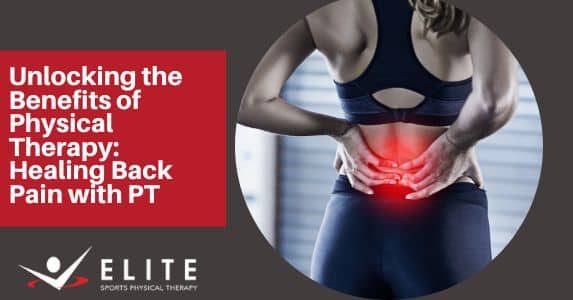For athletes, those that like to stay active and anyone living with chronic back pain, the thought of managing this pain through physical therapy can seem intimidating or even doubtful. While there is definite relief to be found in PT treatments for sore backs, deciding whether to pursue it as an option can be overwhelming. In this blog post, we want to help you explore how physical therapy can bring you relief from your back pain. We will discuss how specific techniques used by physical therapists might benefit different types of injuries as well as how staying consistent with therapy can positively impact your long-term health and fitness goals. Unlocking the benefits of PT is a journey worth taking – so let’s take that first step today!
Introduction: Explaining the challenge of managing back pain and exploring if physical therapy could bring relief
Back pain is a common complaint among people of all ages, and it can be incredibly debilitating. Even minor cases of back pain can interfere with day-to-day activities such as sitting, standing, walking, and driving. To make matters worse, back pain is often difficult to diagnose and pinpoint the source of the pain. The causes of back pain are varied, ranging from muscle strain, poor posture and injury to medical conditions such as arthritis or scoliosis.
Physical therapy is one potential treatment option for managing chronic back pain. Physical therapists use a variety of techniques to help reduce inflammation and relieve discomfort, including stretching exercises, massage therapy, ultrasound therapy, heat/cold therapy and therapeutic exercises. The goal is to not only reduce the severity of current symptoms but also prevent future episodes by improving strength and range of motion in muscles and joints affected by the condition.
One benefit of physical therapy for back pain relief is that it may help reduce reliance on medications such as nonsteroidal anti-inflammatory drugs (NSAIDs). In addition to providing short-term relief of symptoms like swelling and stiffness, physical therapy can improve overall flexibility which in turn helps strengthen weakened muscles that support the spine, reducing pressure on vertebrae discs.
Also known as rehabilitative exercise, physical therapists may also use therapeutic exercises designed specifically for their patient’s needs which incorporate balance training to improve core strength which can provide long-term relief from lower back pain caused by postural imbalance or muscular weakness. Furthermore, physical therapists will usually give patients instructions on how they should move throughout their day in order to keep their spine aligned correctly while avoiding injuries that could lead to further discomfort down the road.
Physical therapy offers an effective way to manage chronic lower back pain without relying solely on medication or invasive treatments such as surgery. It’s important to find a qualified physical therapist who understands your individual needs so you can get the most out of your recovery plan.
Discussing the Specific Techniques Used by Physical Therapists to Treat Back Pain
Physical therapy is a beneficial form of treatment for those suffering from back pain. It can help to reduce pain, improve mobility, and increase strength. Physical therapists utilize an array of specific techniques in their treatments such as stretching, exercises, manual therapy, ultrasound, electrical stimulation, and ultrasound-guided injections.
Stretching is a common form of physical therapy used to reduce back pain and improve flexibility. Stretching helps to relax tense muscles which may have become strained due to poor posture or injury. Therapists will often guide patients through various stretches that are specifically designed for the affected area.
Exercises are also a major component of physical therapy protocols when treating back pain. It’s important that these exercises be tailored to the specific area of the lower back that needs attention. Therapists may prescribe strengthening or stabilization exercises that can promote muscular balance and provide additional support for weakened areas of the spine.
Manual therapy includes techniques such as massage, joint mobilization, and myofascial release. These techniques work by helping to relieve muscle tension which can directly affect the amount of pain experienced in the lower back region. Massage may also increase circulation in the area which can help promote healing and reduce inflammation.
Ultrasound is another type of treatment often utilized in physical therapy protocols for managing back pain. Ultrasound works by producing sound waves which penetrate deep into tissue layers allowing therapists to target different areas with precision treatment. Heat generated by ultrasound waves helps to stimulate blood flow while relieving stiffness and improving muscle flexibility at the same time.
Electrical stimulation is a technique commonly used by physical therapists when treating persistent or chronic back pain cases. This type of treatment utilizes small electrical currents that are passed through nerve pathways helping to block unwanted sensations of pain while stimulating healthy nerve pathways leading to improved muscle function and movement control.
Finally, ultrasound-guided injections are another form of treatment available when dealing with more severe cases involving low-back issues caused by herniated discs or other degenerative conditions in the spine itself. These injections use an ultrasound machine to guide medication directly into damaged tissues providing long term relief from painful symptoms associated with these conditions.

